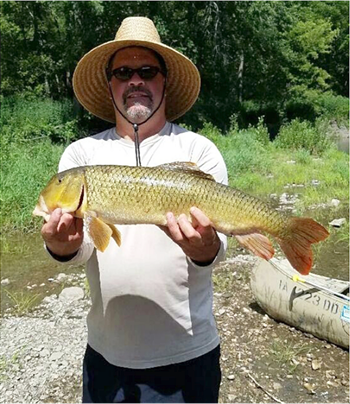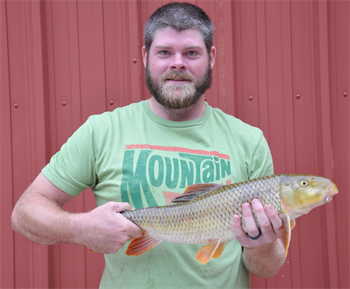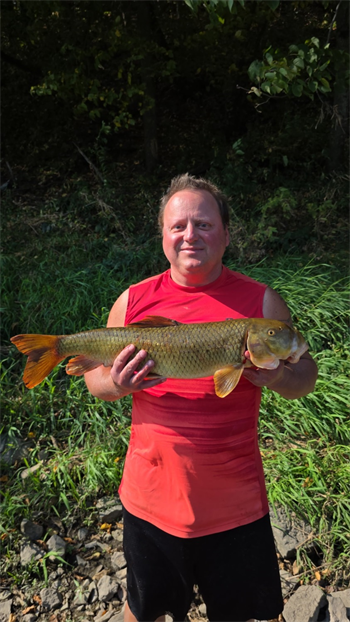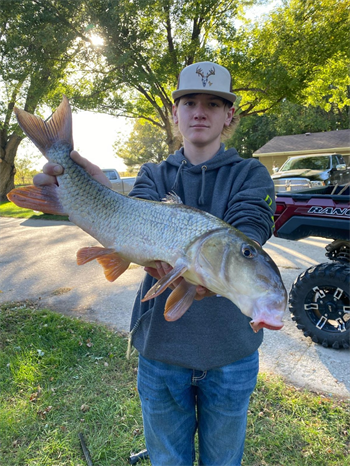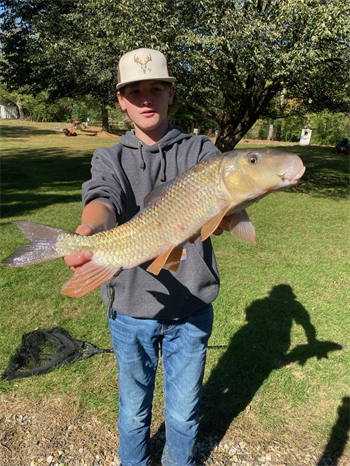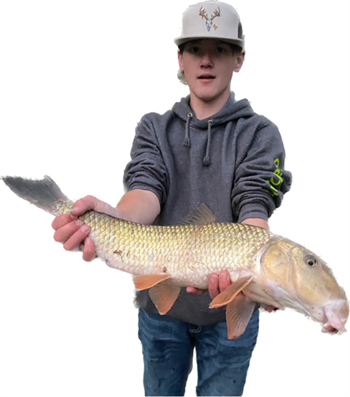Fish Iowa - Fish Species - Greater Redhorse
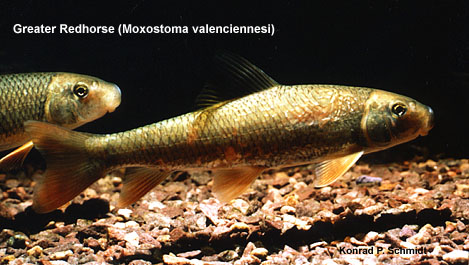
Characteristics
A red-finned sucker, similar in physical appearance to the Shorthead and River Redhorses. Its body is stout, nearly round, with a large head, large mouth, deeply plicate lips, and the snout does not overhang the mouth. The lower lip is much broader than the upper lip, often looking swollen with the halves forming an obtuse angle, set at 100-160 degrees. The dorsal fin is slightly convex in adults with 13-14 rays (11-15), anal fin rays are 7, and pelvic fin rays 9 (8-10). The lateral line is complete with 42-45 scales. Scale numbers around the caudal peduncle are 16 (14-17). Breeding males develop tubercles. Pharyngeal teeth are heavy and comb-like, about 55 per arch.
Foods
Aquatic insect larvae and small mollusks.
Expert Tip
Hook-and-line anglers generally only take suckers during early spring spawning runs, and more commonly in northeast Iowa rivers and streams.
Details
Little is known about the ecology of the Greater Redhorse at all life history stages. The Greater Redhorse needs riffles for spawning, but maintains summer homes in low velocity runs. It is sensitive to chemical pollutants and turbidity, which could explain its rarity in Iowa waters.
The Greater Redhorse is the largest of the redhorses - preferring large rivers or lakes. Their spawning run closely follows that of the White Sucker, taking place in late spring when water temperatures are 62-66 degrees. They gather in large schools to spawn over shoals in moderate to swift current on a sand, gravel or rubble bottom. Spawning habits are similar to other redhorse where two males spawn one female. Males build nest troughs before the actual spawning activity. Males probably mature at ages 5 and 6 and females one year later.
Sources:
Harlan, J.R., E.B. Speaker, and J. Mayhew. 1987. Iowa fish and fishing. Iowa Conservation Commission, Des Moines, Iowa. 323pp.
Loan-Wilsey, A. K., C. L. Pierce, K. L. Kane, P. D. Brown and R. L. McNeely. 2005. The Iowa Aquatic Gap Analysis Project Final Report. Iowa Cooperative Fish and Wildlife Research Unit, Iowa State University, Ames.
Photo Credit: photo courtesy of Konrad P. Schmidt, copyright Konrad P. Schmidt.
Distribution Map

There are no current collections of the Greater Redhorse in Iowa. Historic collections, and more recent publications, both list the species as being in Pools 9 through 11 in the Mississippi River. Most likely, this very rare fish is on the verge of extirpation from the state.
See our most recent distribution data for this species on the Iowa DNR's Bionet application.
